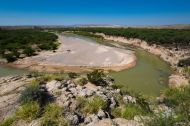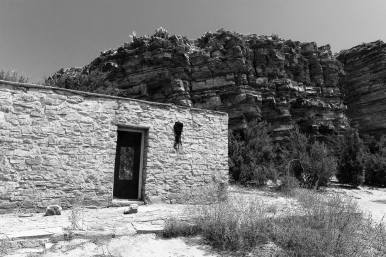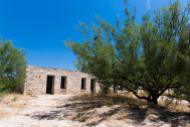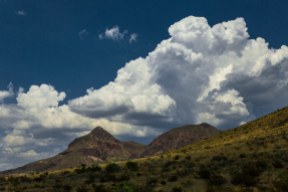To know Texas A&M Center for Mathematics and Science Education (CMSE) researcher Dr. Craig Wilson is to love him — if not for his genuine passion and absolute gift for scientific knowledge, inquiry and outreach, then for his entertaining stories in pursuit of the aforementioned. Here’s one that he shared last week with several people in the Texas A&M Science Dean’s Office, most of whom know a thing or two about spending time in close quarters with both Craig and his cockroaches. Let’s just say it’s better to be hissing than missing!
* ~ * ~ * ~ * ~ *
The university media specialist (by his own admission a non-scientist) was spending half a day with us to learn and write about the Future Scientists Program. He had been taking all manner of photos, including many of the teachers using the digital microscopes in the classroom that had been set aside for our use. He then accepted an invitation to join us outside studying in the wildflower meadow, where I had the teachers collect a variety of flowers with the goal to examine different types of pollen.
No sooner had he joined us than he left us, taking off running back to the road like a scalded cat screaming, “Snake!” At that point, bodies bolted in all directions, while I headed to the area where the snake might have tried to make its own escape. I was able to secure a four-foot rat snake (Elaphe obsolete lindheimeri) with one foot and grasped it behind the head. If possible, it seemed more agitated than the erstwhile cameraman.
This seemed like a teachable moment, so I carried my prize back to the classroom for further study and looked for a suitable container. In a side room, I found the old terrarium inhabited by 40 Giant Madagascar Hissing Cockroaches (Gramphadorhina portentosa). Still holding the snake firmly in one hand, I managed to remove the lid … but where to put the cockroaches? Out of the corner of my eye, I saw a waste bin with a liner, so I dumped the cockroaches in there for later use and placed the snake in the terrarium. At that point, the by-now-somewhat-calmer-and-mollified photographer steeled himself and took photos of his incarcerated nemesis.
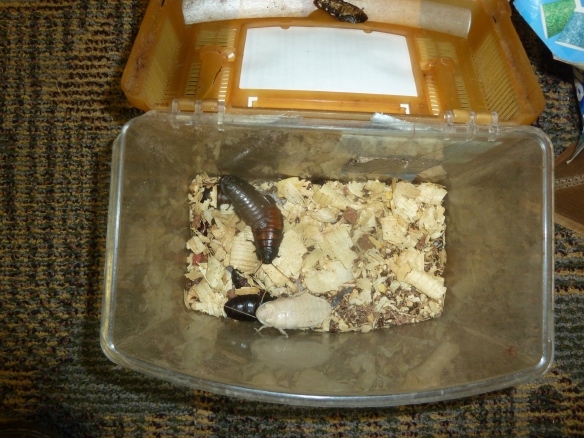
Madagascar Giant Hissing Cockroaches, properly secured and suitable for transport to an educational environment near you! Craig notes that the white one pictured here is not an albino; rather, she has just emerged from her exoskeleton and therefore is soft and white. From here, she will hide, swell up and darken in color. He says they do this whenever they have grown too large for their current exoskeleton.
An hour later, I was ready for the teachers to study the cockroaches, so I went to retrieve them. I was startled to see an empty waste bin! A quick inquiry revealed that a janitor had been seen in the building. Quickly putting two and two together, three of us (not four!) rushed out and around to the back of the building and began dumpster diving. The fifth bag retrieved and opened indeed was holding the missing cockroaches. One should avoid anthropomorphism if at all possible, but the insects appeared none the worse for their experience, if not perhaps chagrinned that they had not made good on their escape to cockroach nirvana at the landfill. I cannot say the same for my co-dumpster divers or for our fearful media specialist.
Each year, I am invited by Texas Farm Bureau to present at this, the Agriculture in the Classroom (AITC) Summer Agricultural Institute, held in 2015 at Tarleton State University in Stephenville, Texas. Each year, something notable happens, usually on the good side of bad. For example, I always take the teachers to walk over and study the turf grass experiments nearby. While there, I also collect lily flowers (Lilium) for them to study, as there is a large bed set aside to grow them that rivals Joseph’s Coat of Many Colors, such is the proliferation of shapes and colors of the large blooms.
However, this year was different. This year, the research scientist unexpectedly showed up and showed concern at this uninvited presence. Naturally, I marched straight up to him and asked him to explain his research. He was somewhat taken aback, given that he is not a people person. When he kindly invited them to help themselves to lily flowers, I had to admit that I had already helped myself on their behalves. My transgressions are always in the name of science.
For many, this would be a very different day’s work, but for me, it was all in a day’s work.

Craig routinely brings his cockroaches and other insects to K-12 classrooms and educational outreach events (in this case, Expanding Your Horizons) held at Texas A&M and other universities to allow kids of all ages to get up close and personal with their environment.















